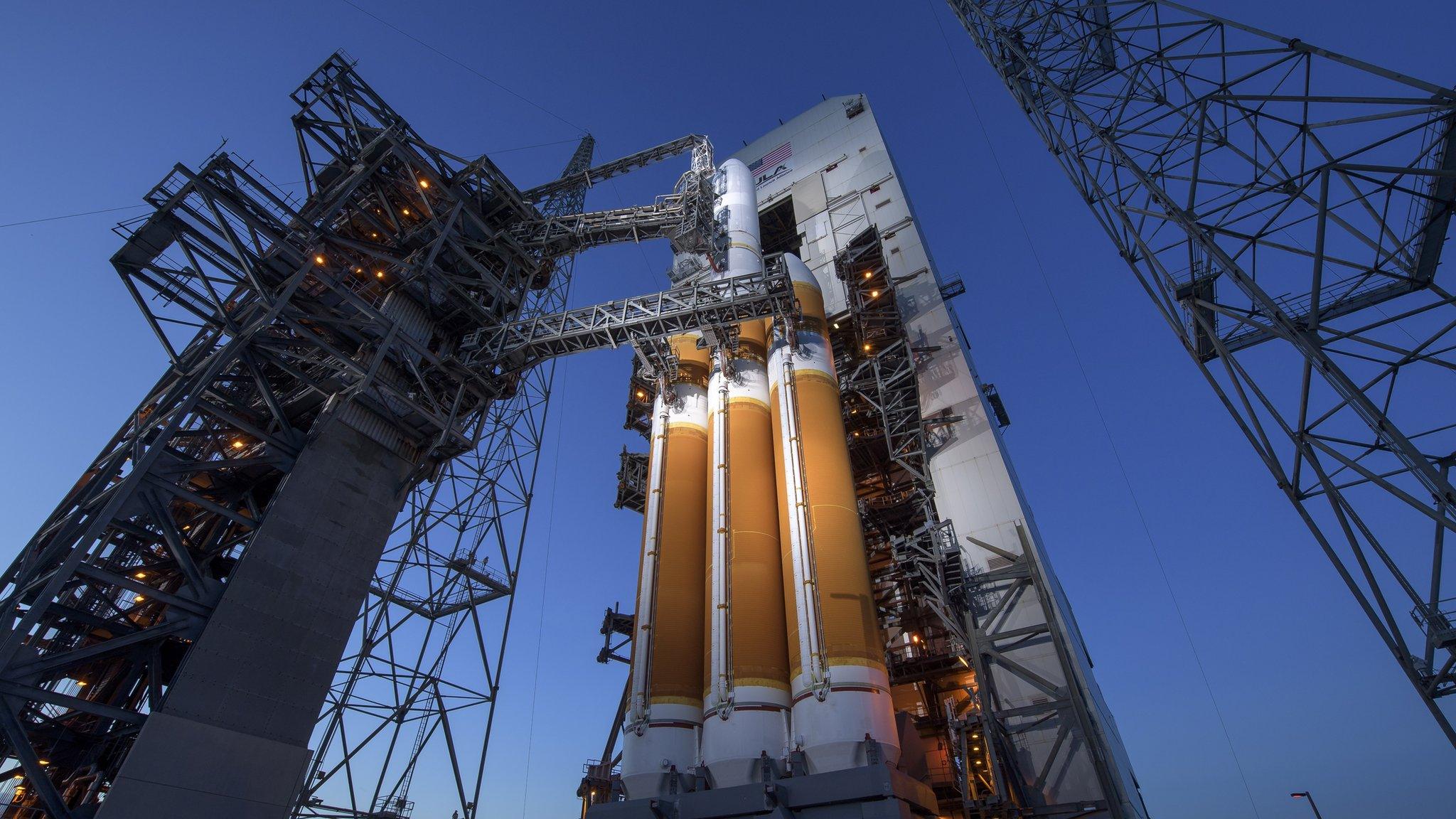Parker Solar Probe: Sun-skimming mission starts calling home
- Published
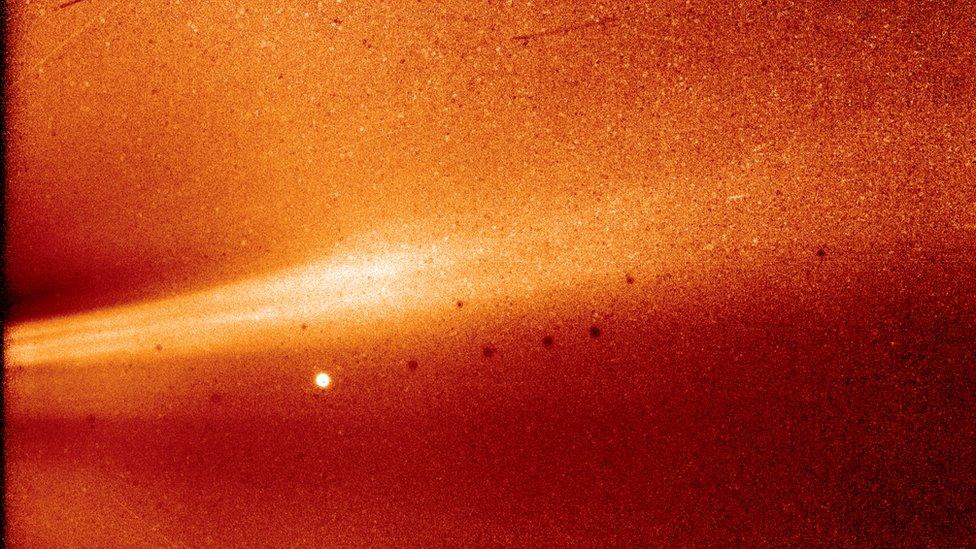
A streamer, a dense part of the corona, moves away from the Sun (out of view to the left)
Just weeks after making the closest ever flyby of the Sun, Nasa's Parker Solar Probe is sending back its data.
Included in the observations is this remarkable image of the energetic gas, or plasma, flowing out from the star.
The bright dot is actually Mercury. The black dots are repeats of the little world that occur simply because of the way the picture is constructed.
Parker's WISPR instrument acquired the vista just 27.2 million km from the surface of the Sun on 8 November.
The imager was looking out sideways from behind the probe's thick heat shield.

Other stories from the AGU meeting you might like:

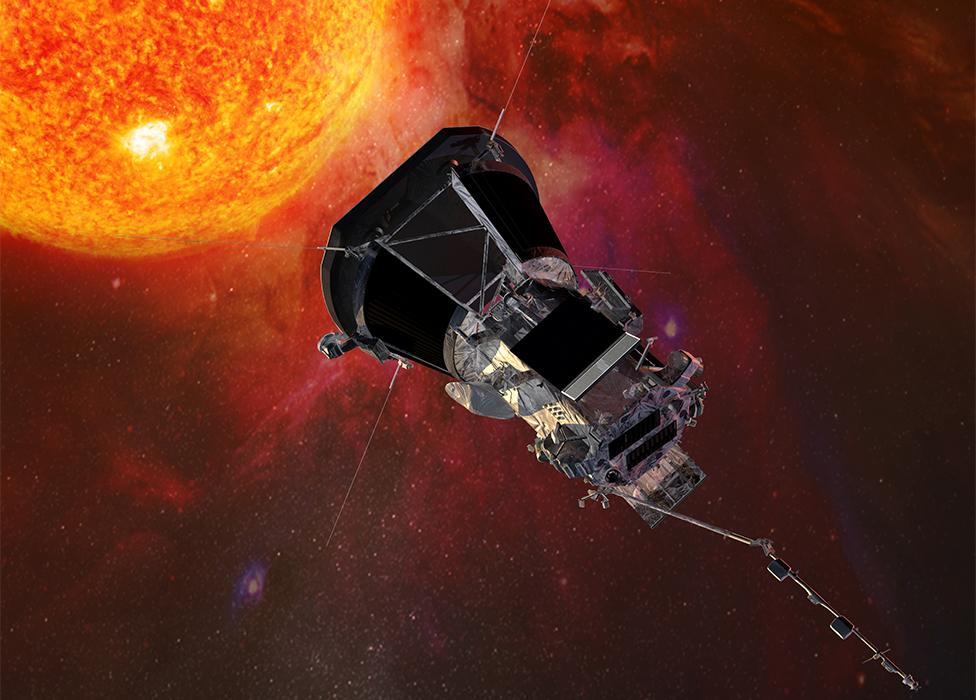
Artwork: Parker must always keep its heatshield pointed at the Sun
The Nasa mission was launched back in August to study the mysteries of the Sun's outer atmosphere, or corona.
This region is strangely hotter than the star's "surface", or photosphere. While this can be 6,000 degrees Celsius, the outer atmosphere may reach temperatures of a few million degrees.
The mechanisms that produce this super-heating are not fully understood.
Parker aims to solve the puzzle by passing through the outer atmosphere and directly sampling its particle, magnetic and electric fields.
"We need to go into this region to be able to sample the new plasma, the newly formed material, to be able to see what processes, what physics, is taking place in there," explained Nicola Fox, director of the Heliophysics Division at Nasa HQ in Washington DC.
"We want to understand why there is this temperature inversion, as in - you walk away from a hot star and the atmosphere gets hotter not colder as you would expect."
Not only is Parker breaking records for proximity to the Sun, it is also setting new speed records for a spacecraft. On the recent flyby, it achieved 375,000km/h. The fastest any previous probe managed was about 250,000km/h.
Parker will go quicker still on future close passes of the Sun..
The latest science from the mission is being featured here at the American Geophysical Union, external Fall Meeting - the largest annual gathering of Earth and space scientists.
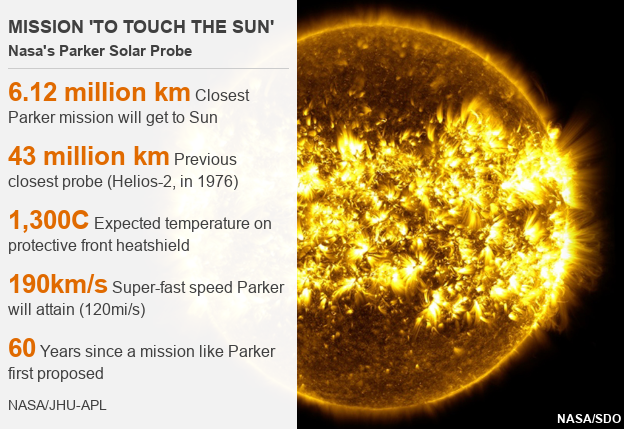
Jonathan.Amos-INTERNET@bbc.co.uk, external and follow me on Twitter: @BBCAmos, external
- Published30 October 2018

- Published18 September 2018
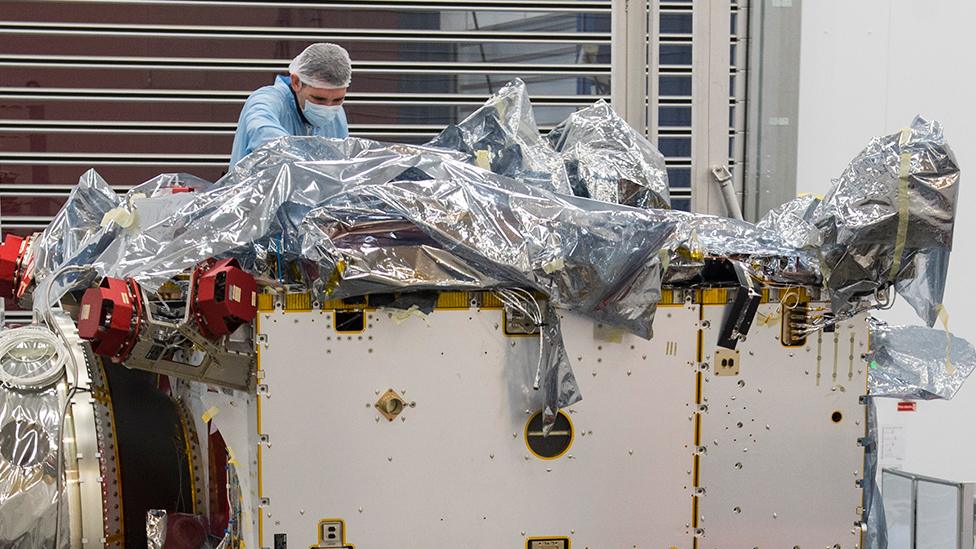
- Published12 August 2018
